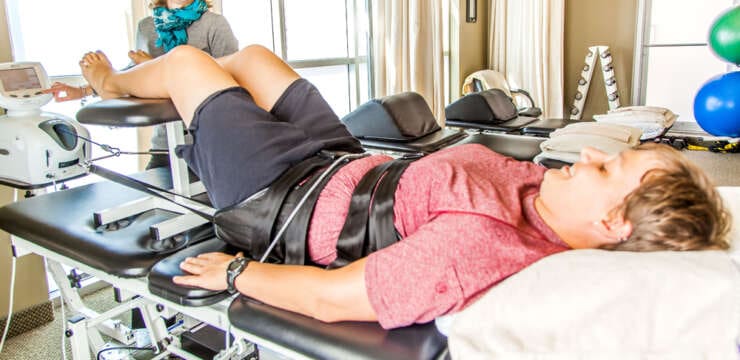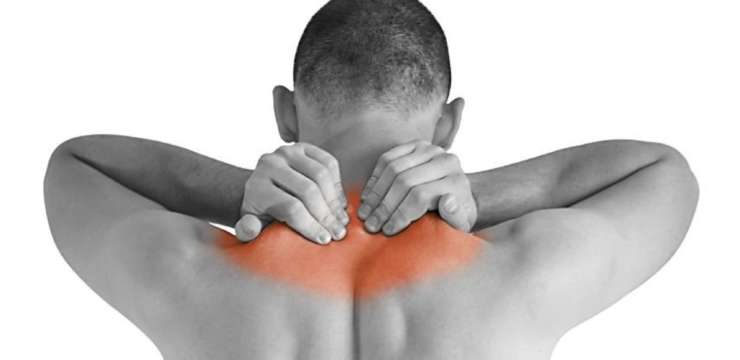Uncover the advantages of swimming for spinal health and how regular practice can lead to better mobility for your ba Dive Deeper: The Guide to…


Uncover the advantages of swimming for spinal health and how regular practice can lead to better mobility for your ba Dive Deeper: The Guide to…

Learn how to manage spine and back pain after a car accident while recovering with effective treatment strategies for a better lifestyle. Introduction Physical trauma…

Can individuals incorporate these simple but effective exercise routines to reduce pain and discomfort in their spine and back? Why It’s Important To Keep The…

Can individuals maintain proper hydration levels in their bodies to prevent spinal pain and other musculoskeletal conditions? Introduction When making small changes to better their…

Can healthcare professionals help individuals with spinal pain by incorporating non-surgical spinal decompression to restore mobility? Introduction Many individuals don’t realize that putting unwanted pressure…

In individuals with herniated discs, how does non-surgical decompression compare to traditional surgery repair the spine? Introduction When many individuals begin to add unnecessary pressure…

For cervical pain, there is often more than one cause and more than one course of treatment. To begin, the first step is to perform an inspection. The inspection can let us know if there is a deformity, instability, abnormal head posture, asymmetry, torticollis, or lower limb weakness. This is a crucial first step as it sets the tone for the course of treatment. Next, we have palpitation. This is where we examine if there is tenderness or masses. The areas to check are posterior in the midline, lateral, supraclavicular, and anterior. Midline tenderness in the cervical spine can be due to whiplash injuries and indicate more neck trauma. Range of motion is performed next. To obtain a proper diagnosis, we check the cervical motion in flexion (normal range is 80 degrees), extension (normal range is 50 degrees), lateral flexion (normal range is 45 degrees), and rotation (normal range is 80 degrees). Finally, we check for sensory. Sensory include numbness, tingling, burning, and pain in the neck, back, or extremities.Â
Causes of Neck Pain
Neck pain can be caused by a variety of things, as the list is long. However, the following list is used to rule out the most severe pathology to determine the root cause of a patient’s cervical pain.Â
Injury and Accidents- hyperextension and/or hyperflexion (whiplash)Â
Degenerative Disorder (osteoarthritis, degenerative disk disease, and spinal stenosis)Â
InfectionsÂ
Inflammatory Disorder (Rheumatoid arthritis, ankylosis spondylitis)Â
Tumors / Benign TumorsÂ
Cervical FracturesÂ
Inflammatory Disorders
As we take a closer look, we notice that at the root cause of any pain or discomfort occurring in the body is inflammation. Inflammation is needed to help the body heal. However, when inflammation is occurring for too long, problems begin to arise. Excessive inflammation begins to sends the wrong signals throughout our body, and additional hormones (like cortisol, the stress hormone) begin to be released. With additional cortisol, individuals begin to have trouble sleeping, weight gain, and headaches, eventually leading to an autoimmune disorder if not properly handled in the early stages. With inflammation running the body, orthomolecular health, and phase angle decline.Â
Phase AngleÂ
The phase angle is how health care professionals can monitor the integrity of cellular membranes. If the phase angle begins to decline, it has been linked directly to a decline in overall health. Similar to if phase angle increases, overall health is increasing. The integrity of cellular membranes is essential as cell survival depends on solid membranes. When the cellular wall is weak, it can collapse. From here, it is difficult for the body to take up the proper nutrients it needs. Additionally, with a weak cellular membrane, the cell is left with little to no protection from outside invaders. Stress impacts phase angle by causing individuals to release cortisol, be under adrenal stress, gain weight and decrease their overall health.
We monitor a patient’s phase angle with the use of the InBody 770. This advanced machine allows us to not only track the phase angle of our patients but many other areas of their health as well, including but not limited to intracellular and extracellular water.Â